Collision course
Which version of Test Track is better? Here’s where things get tricky… Test Track was a legend. Epcot’s first certifiable thrill, it helped (for better or worse) to redefine what Epcot could be. We offered earlier that the two version of Test Track are so dissimilar, we consider them two different rides, no more related to one another than a Lost Legend: The Twilight Zone Tower of Terror is to Guardians of the Galaxy – Mission: BREAKOUT!
But to get to the point: which is better? As you might imagine, the decision is a divisive one, and to this day, fans can’t seem to agree on which version of the ride is “better.” In this writer’s opinion, a head-to-head face-off is telling. And any face-off has to begin with this astounding (and sometimes surprising) side-by-side video of both versions of the ride. There are very, very few moments when they resemble one another in anything more than an allusion! (By the way, the video uses binaural sound so that, in headphones, the left ear is the “old” Test Track and the right ear is the “new.”)
With that comparison in mind, here are five head-to-head tests of our own design…
HEAD-TO-HEAD #1: Setting and Story
There may be a litany of complaints worth leveling against the rapid loss of Legends at Epcot and the ensuing half-hearted thrill rides that resulted. One common thread is that many of Epcot’s newest generation of rides hit hard on a tell-tale signs of a “bad” ride: they invariably take place in a corporate office or training center.
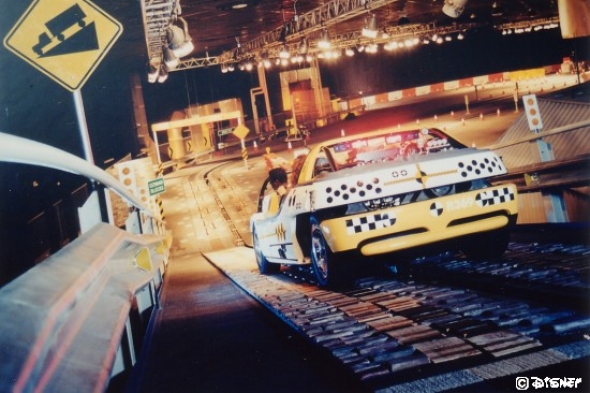
Why does that matter? Put simply, it’s a tactic used whenever Imagineers doubt guests’ ability to leave reality behind. If designers don’t think they can trust you to suspend your disbelief and enter another world, they can ground the story in someplace familiar. By having an adventure start in (or worse, wholly take place in) an office, institute, or training center, guests can stay constantly tethered to reality. Exiting through the gift shop is practically assured since you’re reminded again and again that the ride is happening in a theme park. In other words, it reassures: “Don’t worry! You haven’t left the park’s pathways too far behind, and you’ll be back soon!”
Even if EPCOT Center was always a park that told the truth, rides like Journey into Imagination, World of Motion, Spaceship Earth, The Living Seas, and Horizons could go to incredible places, unimaginable times, and meet unthinkable characters to do it.

Compare that to the coolly received Mission: SPACE, an outright Declassified Disaster: Journey Into YOUR Imagination (with its tour through the offices of the Imagination Institute, above), the short-lived Lost Legend: BODY WARS, and yes, the original Test Track and you’ll see it again and again – constant reminders that what you’re doing is just a test or experiment inside of a theme park, not a legitimate journey.
In other words, many of Epcot’s current rides seem to mistake the park’s “industry and innovation” focus as a moratorium on transporting guests to another place and time. In the original Test Track’s case, we were meant to believe that we were in a modern industrial factory testing grounds, standing in for crash test dummies. Look up – there are the light fixtures! Look to the left and right – the corrugated steel walls of an industrial showbuilding. The time is now. The place is here. Your role is obvious and contrived. No imagination necessary.
The “new” Test Track changed that, sending us to a world disconnected from our own (even if it’s a microcosm compared to the global span of World of Motion or Journey into Imagination) and, perhaps more than any modern ride Disney’s conceived, trusted its riders to open their minds, make actual choices, and “get” the concept without being hit over the head with it.
ADVANTAGE: The “new” Test Track
HEAD-TO-HEAD #2: Future-Readiness
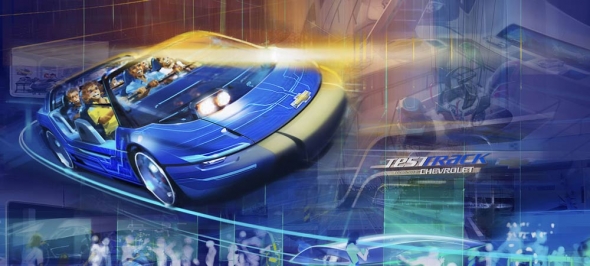
Even separate from its grounded setting, the original Test Track was a product of ‘90s design, and maybe – just maybe! – by 2012, it was showing. The “construction zone” theming around the ride, traffic signs, and “warehouse” queue weren’t inspirational or futuristic, and if Epcot were determined to keep Future World innovative, Test Track would need to change. And what it changed into is, almost inarguably, more futuristic at least, and simply a better design for the 21st century at best.
Even if it might seem odd, the new Test Track was meant to be a flagship for Disney’s MyMagic+, the billion-plus dollar infrastructure rebirth that would update all of Disney’s decades-old systems between parks, hotels, restaurants, and stores in an all-at-once growth spurt. The new Test Track was supposed to be a living example of what that technology could bring – a mere prototype for the way attractions of tomorrow would become personalized to us. At least so far, the new Test Track is the most visible and recognizable personalized attraction credited to MyMagic+, but the test is promising.
ADVANTAGE: The “new” Test Track
HEAD-TO-HEAD #3: Fun Factor

Maybe it’s unfair to make “fun” into a quantifiable measure, but we wholeheartedly hand this category to the “old” Test Track. While it wasn’t packed with outright puns or slapstick humor, it had an element of goofiness and self-awareness that stuck. Even if we can logically see the fault in the ride’s “grounded” setting and its distinctly unfuturistic vibe, we can also appreciate that there’s something gleeful about passing through the hot and cold environmental chambers; weaving around cones toward our own reflection; zipping past cardboard trees on a clearly-contrived obstacle course; of becoming a crash test dummy.
From its musical, kinetic factory queue to a ride packed with cutout figures and traffic signs, the original Test Track wasn’t very high-brow, and maybe that’s an advantage. Instead, it was just… fun. And to this day, the moment when you realized that you’d lined up with a barrier crash test ought to be regarded as one of the more fun and clever moments on any of Disney’s modern dark rides.
The “new” Test Track, on the whole, takes itself much more seriously. That may be more fitting for the future of Epcot, but it’s not nearly as “zany” as the original ride felt. Whether that’s an improvement or not is up to riders to decide, but for our part, we’ve got to give credit where credit is due.
ADVANTAGE: The “old” Test Track
HEAD-TO-HEAD #4: Educational Aspect

At Epcot’s core is education by means of inspiration. By exposing people to the prologues of the past and the possibilities of the future, it was meant to inspire futurism, Americana, and innovation. But an unfortunate reputation as “the educational park” seemed to cripple it, making it a pop culture parody; the Disney World park kids dreaded wasting a day at.
Test Track, by its nature, was meant to renew interest in a fledgling park that was quickly losing its way and its sponsors. And even if Test Track was vastly different from World of Motion, it retained an educational element – exploring the unseen world of how we know our vehicles are safe. Much more than an afterthought, this dissection of manufacturing and safety was the whole point, even if it was cast in a thrill ride shell. GM would’ve doubtlessly hoped that riders would leave Test Track with an appreciation for what their car can withstand and the process GM uses to test those extremes.
Admittedly, that made TEST TRACK the first Future World ride to drop the “big picture” of an industry’s centuries of development and forward-looking predictions in favor of zooming into a microcosm. But for its practical applications, the original TEST TRACK balanced education and entertainment skillfully.
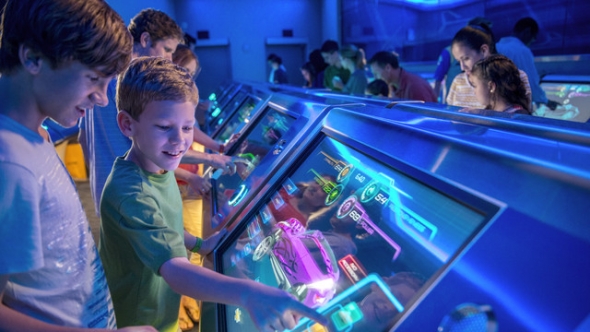
The new Test Track has a vastly different point. It’s not at all about safety features or vehicle testing, despite using the latter as a (pardon the pun) vehicle to get its message across. The new Test Track is a living interactive exhibition focused on STEAM – science, technology, engineering, art, and mathematics.
By placing the engineering design process into the hands of guests and allowing them to conceptually connect their choices with four staples of vehicle design – Capability, Efficiency, Responsiveness, and Power – the disconnected “tests” of the original Test Track have been regrouped and repurposed as messages worth remembering. In that regard, the new Test Track is more broadly applicable to career interests and a STEAM-focused future.
Advantage: TIE
HEAD-TO-HEAD #5: Evolution-Ready
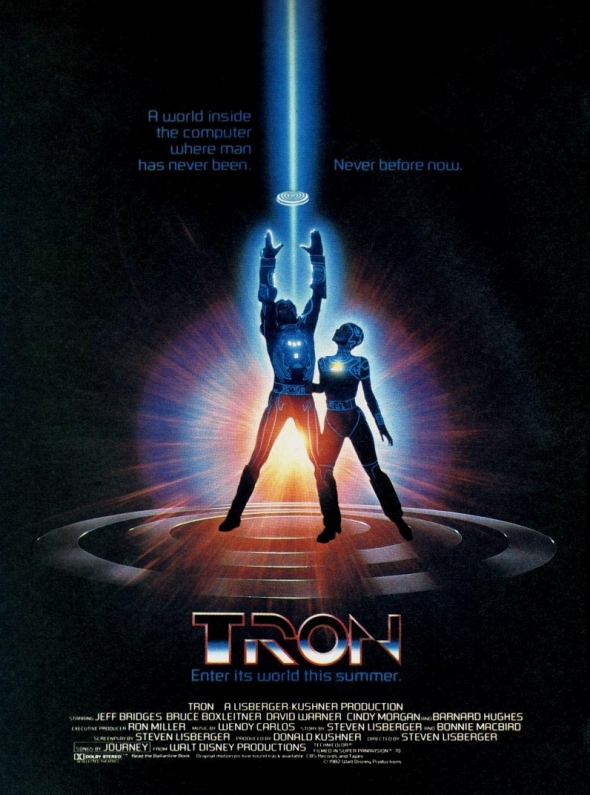
Upon its opening in 2012, fans were struck by just how much the “new” Test Track looked like it had sprung from the groundbreaking 1982 science fiction cult classic, TRON, and its 2010 sequel, TRON: Legacy. Glowing neon pathways, towering pulsing energy beams, digital mountains erupting into pixels, and simulated vehicles racing through laser-grids… The resemblance was uncanny. So identifiable was the style, fans wondered aloud if the new Test Track might’ve been intended to become a TRON Track.
But it all made sense just a few years later when a radical new departure of a Disney Park opened. Suffice it to say that this one-of-a-kind Magic-Kingdom style park did away with Tomorrowland’s classic Space Mountain and instead features a certified Modern Marvel: TRON Lightcycle Power Run, a launched roller coaster that might as well be a sequel to the Test Track Disney debuted in 2012. It’s obvious now that Test Track was indeed a test… to see if Disney could adequately recreate the world of TRON in a ride.

Frankly, it stands to reason that in the in-progress reimagining of Epcot and the ongoing infusion of characters into the park, the new Test Track is poised to adopt TRON as an official IP tie-in… perhaps once GM’s sponsorship ends.
Results Displayed and Verified
To wrap it up, this writer has no qualms about awarding the “new” Test Track over its predecessor. The new version of the ride is transportive, innovative, poised for the future, and educational. While the old Test Track had its strengths in those areas, too, the “new” Test Track was clearly meant to improve upon each (and indeed, why would they change it unless something were broken?) and in our opinion, they succeeded.
We might even argue that the “new” Test Track actually feels like more of a siling to EPCOT Center’s opening day dark rides than anything the park hosted in the last few decades – including the original Test Track! With its TRON-influenced aesthetic, the new Test Track manages to feel like an ’80s throwback to Epcot’s opening year and a sleek, modern, glowing 21st century thrill; and unlike the Epcot attractions of the ’90s, 2000s, and 2010s, it’s actually educational, even if its engineering design focus is different from the historical industry focus of yesteryear.
Look, Test Track was a wonder – a game-changing ride for Epcot, Disney World, and Disney Parks. Without the original Test Track, we wouldn’t have the new Test Track, the Modern Marvel: Radiator Springs Racers in Cars Land, or Imagineering’s magnum opus, Journey to the Center of the Earth at Tokyo DisneySea. Groundbreaking in every way, we’re absolutely positive that Test Track deserves Lost Legend status, standing among Epcot’s greatest.
In this particular case, though, saying goodbye to this Legend isn’t about mourning, but celebrating. By our count, the “new” Test Track is an improvement. Even if it takes itself more seriously than the ride that came before, Test Track Presented by Chevrolet signals the direction Epcot should be going in and provides a great deal of hope for the future.
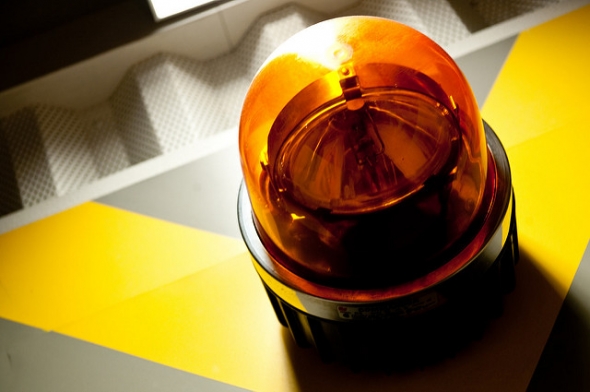
If you were fascinated by this drive through the story of the classic Test Track, we’ve got just the place for you… Make the jump over to our Lost Legends to rev up and set course for another of Epcot’s storied closed classics..

Thank you so much for reading. Now, it’s your turn to join the story. If you enjoy spending time falling down the “rabbit hole” of Park Lore’s in-depth, ad-free, member-supported stories, consider becoming a Member for as little as $2 / month.
Members can unlock rare concept art in every tale, reveal attraction audio streams in select stories, gain access to over a hundred exclusive articles in our quick-read Extra Features and in-depth Special Features collections, gain exclusive podcast extras, and receive an annual member card and merch in the mail! (Plus, y’know, supporting research-based, ad-free, clickbait-free, in-depth theme park writing!)
Then, use the comments below to tell us… did you get a chance to experience both version of Epcot’s Test Track? Which do you prefer, and why? Do you think we’ve reached the end of the story for the transportation pavilion, or will the current ride eventually lose its futuristic grandeur and need an update of its own? Is the “new” Test Track poised to welcome TRON if (or when) a sweeping character infusion overtakes the park? Or does that undermine the entire purpose of exploring the very real career of vehicle engineering and design?



